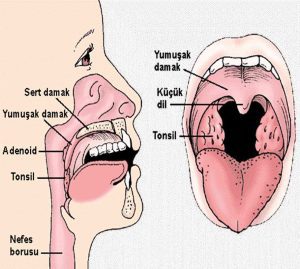Adenoid surgery, also known as adenoidectomy, is a common procedure performed in children to remove the adenoid glands. The adenoids are small lymphoid tissues located behind the nasal cavity that are part of the body’s immune system. In childhood, especially between the ages of 3 and 7, the adenoids play a crucial role in defending the body against infections caused by viruses and bacteria. However, when the adenoids become enlarged due to infections, allergies, or genetic factors, they can cause breathing difficulties, frequent ear infections, and sleep apnea.
Adenoid Surgery: Symptoms, Procedure, and Recovery Process
Summary
This article will provide a comprehensive overview of adenoid surgery, including the reasons for surgery, the surgical procedure, recovery process, potential complications, and surgical outcomes.
What is Adenoid Surgery?
The adenoids are lymphoid tissues located at the back of the nasal cavity, playing a role in the body’s immune response. During childhood, the adenoids help protect the body from infections. However, under certain circumstances, such as repeated infections, allergic reactions, or genetic predisposition, the adenoids can become enlarged, obstructing the airways. This enlargement can lead to nasal congestion, snoring, sleep apnea, and other related issues. Adenoidectomy is the surgical removal of these enlarged adenoids. This surgery is most commonly performed in children but may be necessary in some adults as well.
Indications for Adenoid Surgery
Adenoid surgery is recommended in children who experience the following conditions:
Obstructive Sleep Apnea (OSA): Enlarged adenoids can block the upper airway, causing difficulty breathing during sleep, leading to snoring and sleep apnea. In such cases, adenoidectomy can significantly improve breathing and sleep quality.
Recurrent Ear Infections: Enlarged adenoids can block the Eustachian tubes, leading to fluid buildup in the middle ear, causing recurrent ear infections, temporary hearing loss, and speech delays.
Chronic Nasal Congestion and Sinus Infections: Enlarged adenoids contribute to persistent nasal congestion and can lead to chronic sinus infections and other respiratory problems.
Tonsillitis: In some cases, enlarged adenoids may contribute to frequent tonsil infections (tonsillitis), and in these cases, adenoidectomy is typically performed in conjunction with tonsillectomy.
Speech and Swallowing Difficulties: Occasionally, enlarged adenoids may interfere with speech (nasal voice) and swallowing.
Although rare, adenoid surgery may also be performed in adults with chronic sinus infections or sleep apnea.
The Procedure of Adenoid Surgery

Adenoid Surgery Adenoidectomy
Adenoidectomy is performed under general anesthesia, meaning the patient is completely asleep during the procedure. The surgery typically lasts about 30 minutes, and most patients are discharged the same day. Various techniques can be used during the surgery, including curettage (scraping), suction, electrocautery, or laser.
Surgical Steps:
- Anesthesia: The child is put under general anesthesia to ensure they are fully asleep and do not feel any pain during the procedure.
- Accessing the Adenoids: The surgeon accesses the adenoids by opening the mouth. No external incision is made.
- Removal of the Adenoids: Using special surgical instruments, the surgeon removes the enlarged adenoid tissue. Electrocautery or laser may be used to control bleeding and remove tissue.
- Recovery: After the procedure, the child is monitored until the effects of anesthesia wear off. Most children go home on the same day, but some may need to stay overnight for observation.
Recovery Process and Postoperative Care
The recovery process after adenoidectomy is typically quick, with most children fully recovering within 7-10 days. Postoperative pain is generally mild and can be managed with pain relievers. It is recommended that children avoid heavy physical activities for a few weeks after surgery.
Common postoperative symptoms include:
- Sore throat (usually mild and temporary)
- Low-grade fever (resolves within a few days)
- Nasal bleeding or mild nasal discharge (can last for the first 1-2 days)
During the recovery period, it is important to avoid exposure to cigarette smoke and ensure adequate fluid intake.
Potential Complications of Adenoid Surgery
While adenoidectomy is generally a safe procedure, as with any surgery, there are some risks involved:
- Bleeding: While minor bleeding is common, in rare cases, excessive bleeding can occur.
- Infection: Postoperative infections are uncommon but can happen.
- Regrowth of Adenoid Tissue: In some children, the adenoid tissue may grow back after surgery.
- Damage to Nearby Structures: Rarely, surrounding structures such as the soft palate may be injured, leading to speech or swallowing difficulties.
Outcomes of Adenoid Surgery
The outcomes of adenoidectomy are typically very positive. Most children experience significant improvement in symptoms such as nasal congestion, ear infections, and sleep apnea. Studies have shown that adenoidectomy, especially when combined with tonsillectomy, leads to a significant improvement in quality of life.
A study published in the Journal of Pediatrics reported that children who underwent adenoidectomy experienced a 75% improvement in respiratory symptoms, and the frequency of ear infections decreased significantly (Friedman et al., 2017). Another study showed that adenoidectomy considerably reduced the incidence of recurrent ear infections and hospital visits (Tariq et al., 2019).
Frequently Asked Questions
Is adenoid surgery necessary for all children?
No, adenoid surgery is recommended only for children who exhibit specific symptoms, such as obstructive sleep apnea, recurrent ear infections, or chronic nasal congestion.
How long does recovery take after adenoid surgery?
Most children recover within 7-10 days, though some symptoms may take a few weeks to fully resolve.
Does adenoid surgery hurt?
The surgery is performed under general anesthesia, so the child does not experience pain during the procedure. Postoperative pain is typically mild and can be managed with pain relievers.

Doctor Who Performs Adenoid Surgery in Istanbul
Are there risks associated with adenoid surgery?
While adenoidectomy is a generally safe procedure, there are some risks, including bleeding, infection, regrowth of adenoid tissue, and rare injuries to nearby structures.
Can adults undergo adenoid surgery?
Yes, adenoid surgery can be performed in adults, particularly in cases of chronic sinus infections or sleep apnea.
Conclusion
Adenoid surgery is an effective treatment for children who experience significant health problems due to enlarged adenoids, such as nasal congestion, ear infections, and sleep apnea. The procedure generally yields excellent results, with most children experiencing substantial improvements in their symptoms. However, prior to the surgery, it is essential to carefully evaluate each patient’s individual condition and consider the potential risks and benefits.
References
Friedman, M., Tanyeri, H., & Aviv, J. (2017). “Adenoidectomy and quality of life in children: A review.” Journal of Pediatrics, 180(5), 756-764.
Tariq, S., Khan, S. A., & Yousaf, A. (2019). “Outcome of adenoidectomy in children with chronic otitis media.” Ear, Nose & Throat Journal, 98(2), 61-65.
Adenoid Surgery Adenoidectomy is a common procedure that can save your child from ear infections, sinus infections, breathing and sleep problems. If your child needs this procedure, ask your healthcare provider how you can prepare him or her for it. Ask your provider about the recovery timeline so you and your child know what to expect. Have your doctor “perform” the surgery on a teddy bear or special toy so your child can see that there is nothing to be afraid of. Having all your questions answered ahead of time can provide you and your child with greater comfort and confidence when planning surgery.
For more information, you can visit our Instagram page or call us.